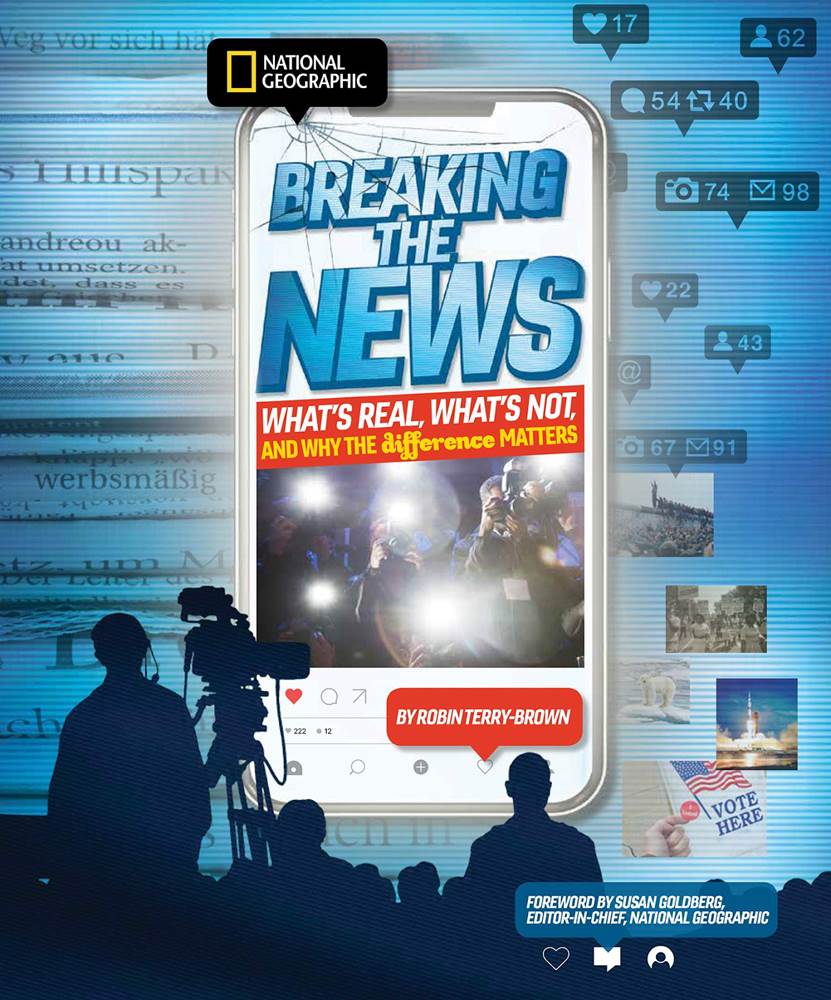Book Review: “Breaking the News” from National Geographic Teaches Readers How to Spot the Real Fake News
Now more than ever, it’s important to not believe everything you hear, read, or even see. With so much misleading and false information out there, how can you protect yourself and your loved ones from all the untruths you come across daily? Well, National Geographic has a helpful guide that’s perfect for any readers old enough to use social media called Breaking the News. The front cover explains it this way: “What’s real, what’s not, and why the difference matters.”
Another appropriate title the authors could’ve used is “So You Want to Be a Journalist” because this excellent compendium of information almost reads like a primer for kids and teenagers interested in pursuing a career that will literally make headlines. The first chapter, “The History of News” goes back to the earliest recorded history and discovers how humans got their news before the printing press and how technology has drastically changed the media landscape.
The second chapter, “Making the News,” is the one that will really come in handy for anybody interested in knowing more about how news outlets craft their stories and the different types of coverage that exist. The book makes it clear that most serious news outlets seek to present an unbiased truth to their readers or viewers and why that can be a difficult goal to achieve. But one thing that’s abundantly clear is that the media is not an enemy of the people with examples of many politicians and world leaders who have claimed otherwise throughout history.
The book has a lot of fun with the content it presents as well, with a few items to look out for. “Famous Flubs” include some laughable accidental fake news stories throughout time. “Hey, That’s a Hoax” looks at some notoriously doctored photos that were once believed to be real. And “A Picture is Worth a Thousand Words” helps readers understand the importance of photography in media (the history of which is covered in chapter 1).
A chapter about news outlets that intentionally give readers only one side of the argument is covered in chapter 3, “Propaganda, Half-Truths, and Hoaxes.” It shows that not all propaganda is malicious and looks at two famous cable news channel hosts who appeal to audiences on the far left or right. The next chapter, “Media Today,” is really about how the landscape has changed with the internet and social networks.
Going back to the introduction of this review, the chapter called “Finding the Truth” is full of helpful tips for readers about how to validate that what they read, hear or see is true. It gives you, the news consumer, the same investigative tools reporters use to get to the bottom of a story. Lastly, the book looks ahead at what the future may hold for how we get our news.
While the target audience for Breaking the News is middle school and high school students, this is also a great resource for educators and parents. The back of the book even has a resource guide for students and educators for further learning. There isn’t a single author attributed either, instead credited to a cabal of journalism professionals, twelve in total who have worked for some of the most prestigious outlets or taught at the finest schools of journalism. It’s top quality from start to finish.



